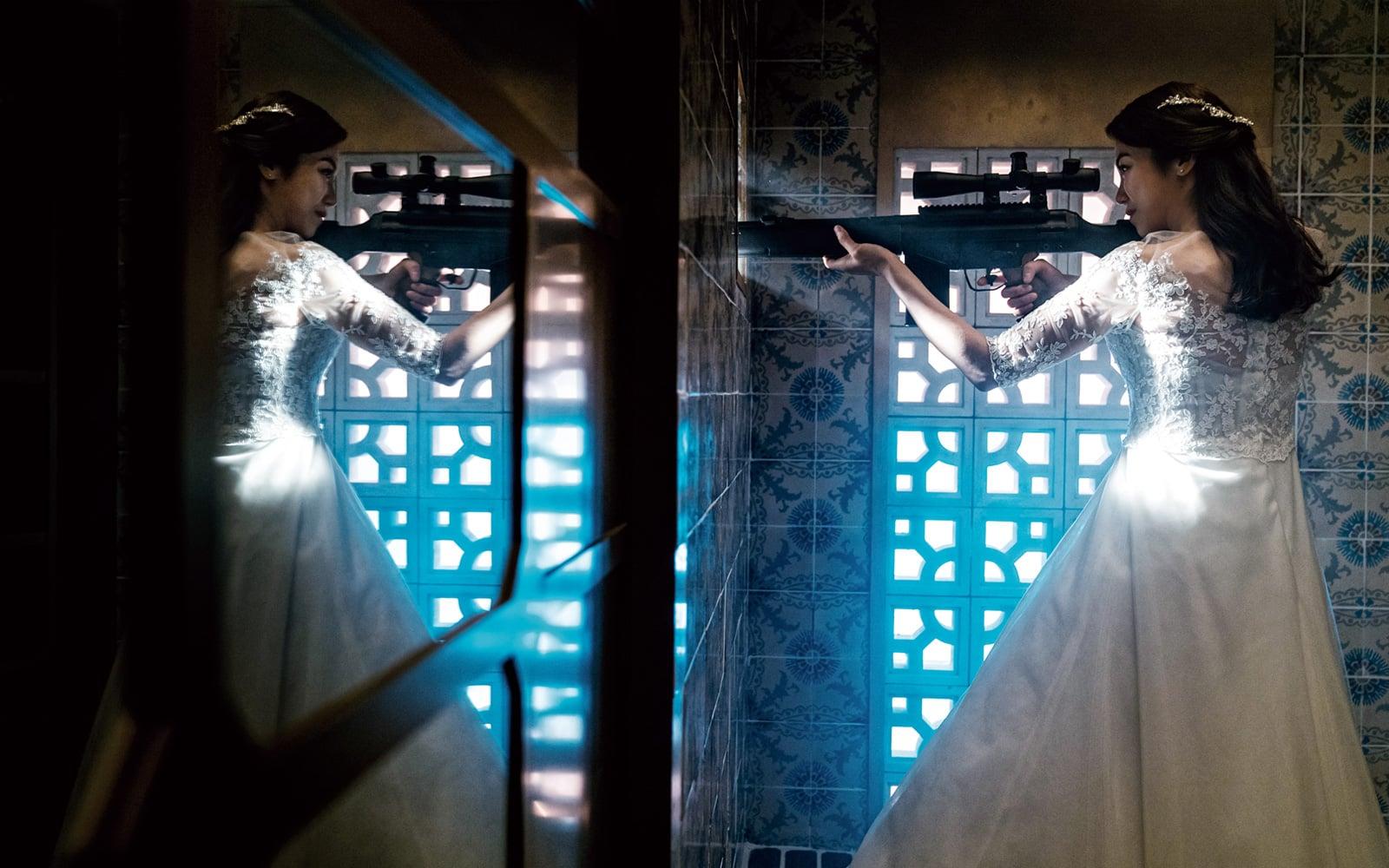The Villainess by Jung Byung-Gil (Review)

The Villainess starts off in blistering fashion: a skilled assassin takes on a whole building full of bad guys in a long, unbroken take that recalls similar scenes from Daredevil and Oldboy. But it consistently ups the ante as the assassin moves from room to room, level to level, dispatching thugs with guns, knives, axes, and anything else she can get her hands on — much of the sequence is seen from the assassin’s point of view, like a live action first person shooter.
It’s a daring stylistic move that pays off well, the intricately choreographed mayhem instantly grabbing the viewer’s attention (though the motion sickness-prone might find it a bit much). Unfortunately, The Villainess ultimately gets bogged down by a convoluted plot and less-than-sympathetic characters, such that even the considerable and well-executed style eventually begins to feel like a gimmick.
A lot of The Villainess’ storyline is pretty familiar if you’ve ever seen Luc Besson’s Nikita or any of its followers: a violent and desperate young woman (the aforementioned assassin) is taken in by a covert agency that trains her, gives her a new identity (in this case, that of an actress named Yeon-soo), and sends her back into the world to do their dirty work. If she survives a decade, she’ll get her freedom and a brand new life.
But the movie does change things up a bit by making Yeon-soo both a widow and a mother. Through a series of flashbacks, we learn that her husband was killed in a violent gang hit, an event that sets her on the rampage of violence that begins the movie. Revenge is a pretty stock storytelling device, but it’s simple, efficient, and works.
As for Yeon-soo’s motherhood, it tries to inject a little extra humanity and pathos into the movie, such as when we see Yeon-soo’s fellow conscripts throw a birthday party for her daughter. However, the movie never does anything worthwhile with the actual mother/daughter relationship. Instead, it’s ultimately a vehicle to bring about a perfunctory romantic subplot involving Yeon-soo’s agency handler, a young man named Hyun-soo who grew enamored with her during her training.
Like Yeon-soo’s motherhood, the movie could’ve done so much more with the romance. I kept expecting it to go a more interesting route when (it’s never a question of “if” in this kind of movie) Yeon-soo discovered Hyun-soo’s true identity, but it ends up being entirely conventional and tonally out of place with the rest of the film.
Faring much better is another tried and true trope, that of secrets from the past coming back to haunt our protagonist. In this case, secrets from Yeon-soo’s past begin to re-emerge, subsequently threatening everything she loves — secrets that may prove too much, even for her deadly skills.
The Villainess really is best when it just focuses on Yeon-soo’s deadly skills and writer/director Jung Byung-gil tries to make the film as kinetic as possible. As bracing as the opening sequence is, the best example of this occurs during a bonkers chase that finds Yeon-soo engaging in swordplay and martial arts while tearing down the streets at breakneck speeds on a motorcycle.
The rapid-fire editing, the stuntwork’s devil-may-care attitude concerning safety and reason, the distorted cinematography, the saturated color palette, the sheer visual lunacy (like the fact that the motorcycles feature handy katana scabbards) — these all reminded me of the madcap action films that came out of Hong Kong in the late ’80s and early ’90s (e.g., Saviour of the Soul, The Heroic Trio, Black Mask), which is not a bad thing. And the film boasts some striking images, like that of Yeon-soo taking out a target with a sniper rifle while dressed in an extravagant wedding gown.
But by the time The Villainess enters its final, blood-soaked act, and the plot grows increasingly (and unnecessarily) convoluted, the action sequences lose their effectiveness. That’s not to say that they’re suddenly less technically and stylistically accomplished than the ones earlier in the film. (I might have gasped in the moments leading up to the final showdown, as Yeon-soo pursued a bus of bad guys while perched on the hood of a car.) But they do become less impactful, and therefore, less interesting when you don’t really care about anyone involved in the melee, or what ultimately happens to them.